
Wombat
Wombat
Wombat
Cute with a charming face! It’s the wombat, a slightly mysterious animal! There are few zoos in Japan that keep them, so some people may have heard their name for the first time! Wombats seem to live leisurely and relaxed lives, but they actually have a bit of a surprising personality. Would you like to take a peek into the mysterious world of wombats?
Wombat Basic Infomation
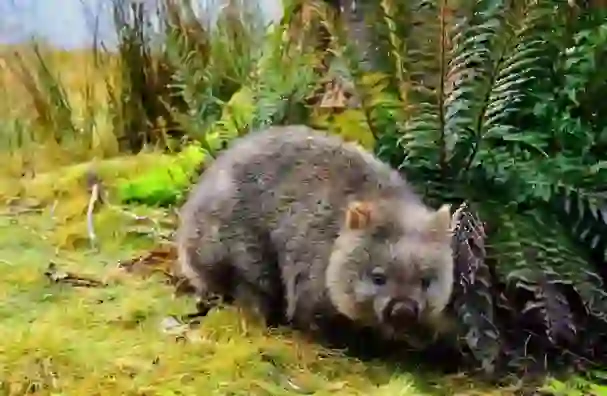
Mammalia-Diprotodontia-Vombatidae-Wombat genus.
Length 71~119cm weight 15~36kg.
※Here is an explanation of the common wombat that is generally known.
Its main habitat is Australia and Tasmania. They live in grasslands, dry areas, and eucalyptus forests.
They have a body shape similar to that of a small bear and are often brown, black, or gray in color. Their hands, feet, and tails are short, and they have teeth that continue to grow throughout their lives, so they adjust by chewing on tree bark to prevent their teeth from growing too long. They are also good at digging holes with their sharp claws.
Wombats are nocturnal animals and tend to sleep in their burrows during the day. Surprisingly, like kangaroos and koalas, they are known as marsupials.
The burrows made by wombats have a very well-designed structure with steps to prevent rainwater from flowing in and are designed to maintain a room temperature of about 20℃.
Wombats have a very slow metabolism and it takes about 14 days for them to digest their food. This is why they can survive even in dry areas where there is not much food.
The appearance of males and females is almost the same, so it is difficult to distinguish them by appearance alone, but females are slightly larger in size and are distinguished by differences in their reproductive organs.
There is no particular season for the breeding period, but the gestation period after mating is said to be about one month. Basically, wombats give birth to one baby at a time.
Their lifespan is about 20 years. Some wombats have lived up to 32 years old.
Wombats mainly eat tree roots, bark, and grass.
Wombat Q&A

Where does the wombat get its name?
The wombat, which is famous as an animal in Australia, but why was it named wombat in the first place?
It is said that it comes from the meaning of “flat nose” in Aboriginal language.
By the way, the bat is called “Bat” in English, but it seems to have nothing to do with this bat.
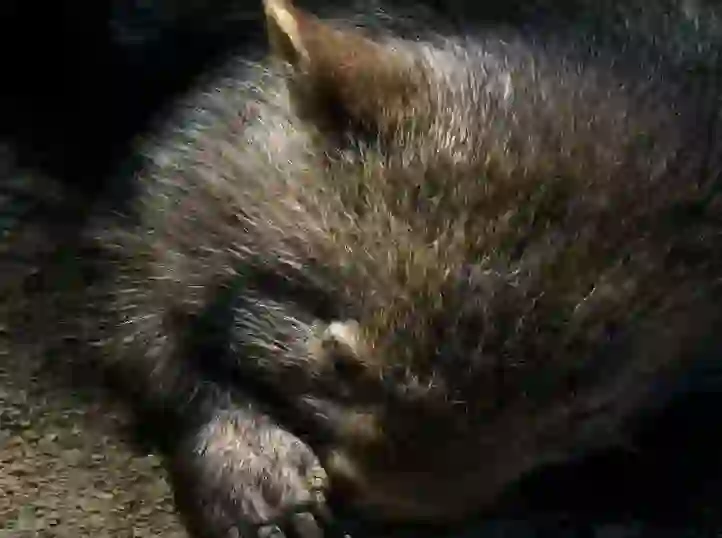
Is it true that wombats raise their children like kangaroos?
The wombat, as introduced in the basic information, gives birth to a baby after a pregnancy period of about one month. Wombats are also marsupials and have a “pouch” similar to kangaroos for females to carry their young. However, there are some differences.
The kangaroo’s pouch is designed so that the baby can face forward from the mother’s belly side. However, the wombat’s pouch is attached to the backside of the mother. Therefore, when the baby comes out, it peeks out with its face in a position where it is back-to-back with its mother.
The reason for this design is that wombats are animals that dig holes and make nests to live in. Therefore, if the pouch were facing forward like a kangaroo’s, soil dug during nest-making would get on the baby’s face. To prevent this from happening, the pouch is attached backward.
By the way, wombat babies live in this pouch for about 5 months. After that, they come out and start living near their mother. However, they sometimes return to the pouch when they feel danger or other reasons. They seem to become independent from their mother after about 7 months.
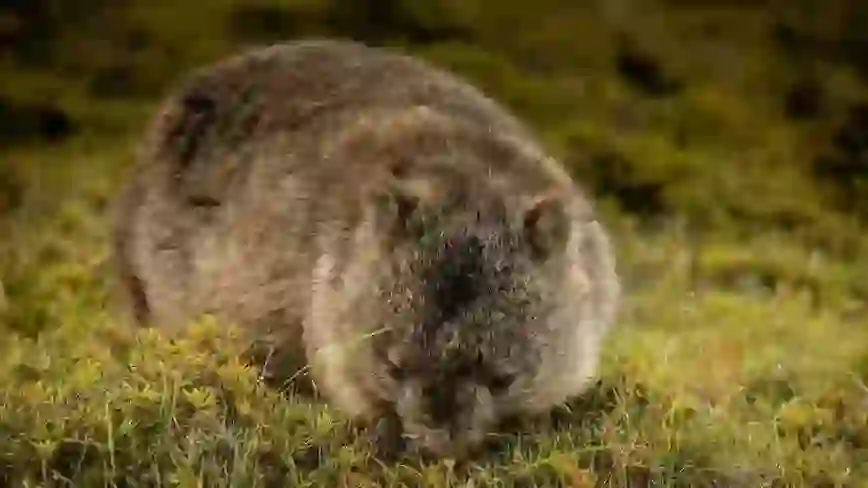
How fast do wombats run?
The wombat usually walks leisurely, but when it gets going, it can run at a speed of 40 km/h!
If the average speed of a bicycle is 18-25 km/h, the wombat will pass you by. It seems that it can maintain that speed for about a minute and a half.
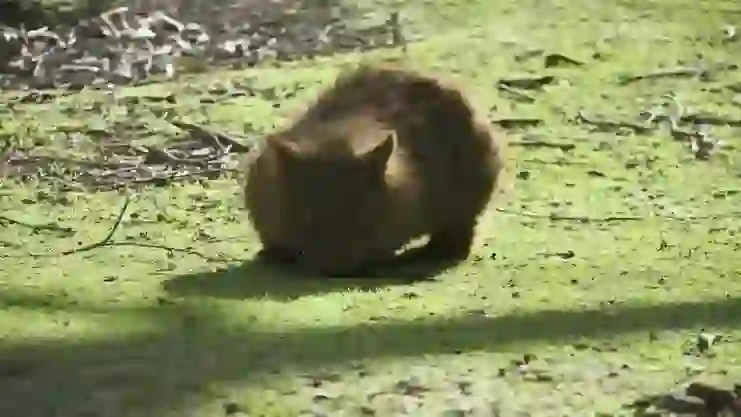
Is it true that wombats have strong buttocks?
To put it simply, it’s true. But what does that mean? Let’s unravel the mystery of the wombat’s butt.
Wombats are covered in fluffy fur, but their butts are actually very hard. Unlike humans, their butts are made of cartilage and are about 6 cm thick.
The reason why their butts are so hard is to protect them from predators such as Tasmanian devils and dingoes.
Tasmanian devils sometimes eat wombats and try to enter their burrows. When a wombat notices this, it blocks the entrance with its butt. The Tasmanian devil’s fangs won’t penetrate the butt. Usually, the Tasmanian devil gives up at this point, but sometimes it can be persistent.
In such cases, the wombat will lower its body and lean forward to lure the Tasmanian devil closer. Then, when the Tasmanian devil is on top of the wombat’s butt, the wombat will use its hard butt to hit the Tasmanian devil’s head against the ceiling of the burrow.
This attack is very powerful and can even crush the Tasmanian devil’s skull and kill it.
This is a story that is rarely heard in Japan, but in Australia, there are sometimes dead Tasmanian devils near wombat burrows.
If you ever have a chance to go to Australia and find a wombat burrow, please don’t try to touch it.
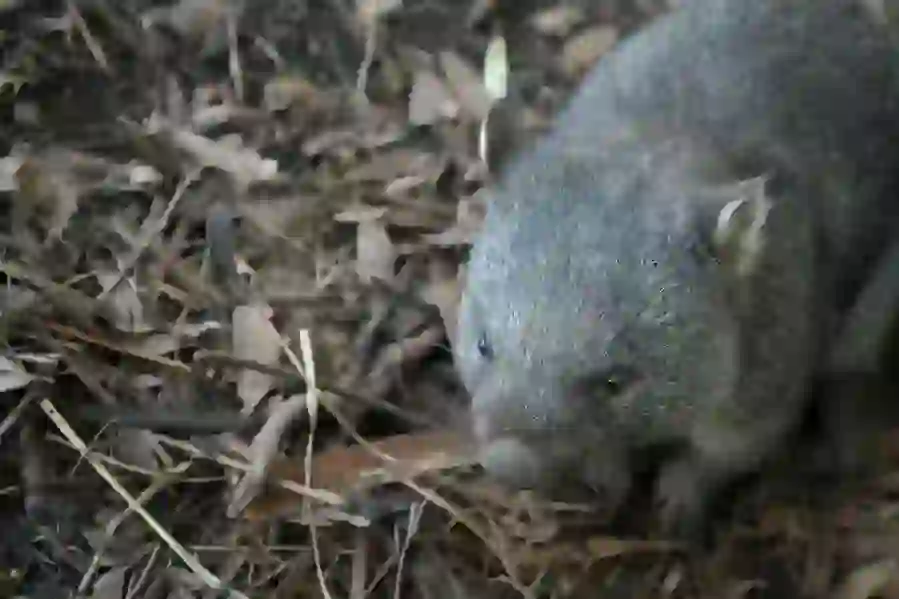
Can wombats be kept as pets?
If you want to keep rare animals, you need to follow the laws set by each country. This time, we will introduce whether you can keep a wombat at home in Japan. With its charming face, it’s so cute that it might become addictive! Some people may have thought about living with a wombat at home. Can you keep a wombat in Japan?
Unfortunately, it is prohibited to keep wombats in ordinary households unless you have special permission such as in zoos.
In the past, in Australia, which is the habitat of wombats, there were cases where cars fell into holes due to wombat burrowing.
As a result, wombats were designated as harmful animals and exterminated. However, because the number of wombats decreased more than expected, they are now protected.
In other words, it is not possible to keep wombats as pets because the Australian government regulates the importation by individuals.
However, it seems that there are cases where wombats are kept in ordinary households in Australia only.
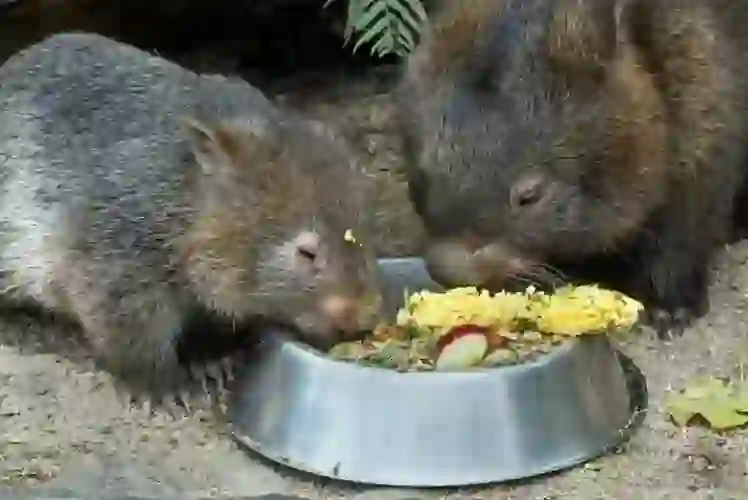
Why is wombat poop square?
Animal feces come in various shapes depending on the species, but the feces of wombats are unusually square. So why do they take such a shape?
However, the feces of wombats kept in zoos are not square. The reason is that they are given an appropriate amount of water with their food, so zoo wombats have round feces.
However, wild wombats live in dry places where they cannot get much water. In such cases, the feces absorb water from the surroundings and hard feces come out.
However, this alone does not explain why they become square. After further investigation, it was found that the intestines of wombats are more complex and stretchy than those of other animals, and their hardness also changes.
It is believed that just before the final excretion, the complex intestine forms a shape and absorbs water all at once. As a result, it becomes square.
The shape is interesting, but it is said that they excrete about 100 pieces of feces per day to claim their territory to others around them.
However, there is also an opinion that they are just excreting within their territory.
There is no conclusive evidence for either the reason for becoming square or the reason for excreting within their territory, so there are still many mysteries surrounding wombat feces.
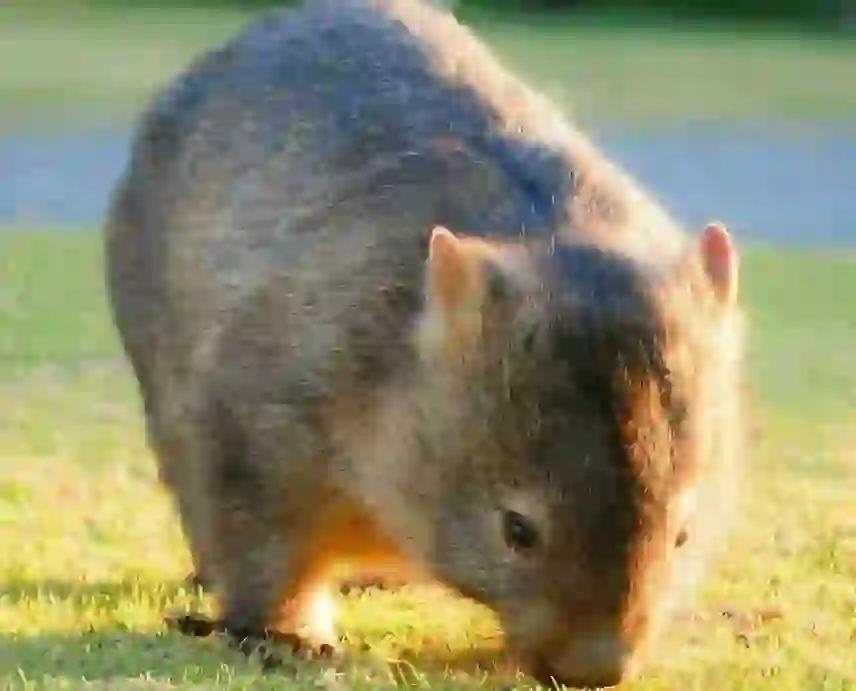
Is it true that there are wombats who have become depressed?
To put it simply, it’s true. It’s surprising that there are animals other than humans that can get depression. I’d like to introduce what this means.
Tonka, a wombat kept at a zoo in Australia, was a boy who loved to interact with visitors to the sanctuary.
However, a super cyclone suddenly hit Australia. The sanctuary where Tonka lived was also damaged by the cyclone, so the zoo had to take an eight-week break.
After a while, Tonka's weight decreased by 20% due to stress. In addition, abnormal behavior was observed, and as a result of being examined at a hospital, he was diagnosed with “depression.”
It seems that animals sometimes break down due to stress in natural disasters, but in Tonka’s case, it is thought that he became depressed because he lost the opportunity to interact with humans because the zoo was closed.
Although wombats are naturally friendly, Tonka-kun may be more fond of humans than others.

Would you like to become a part of the 'Animalbook.jp'?
Turn your knowledge into Q&A and share it with the world. ※Publication will be activated after purchase. Let's share information together!
Wombat Type of List
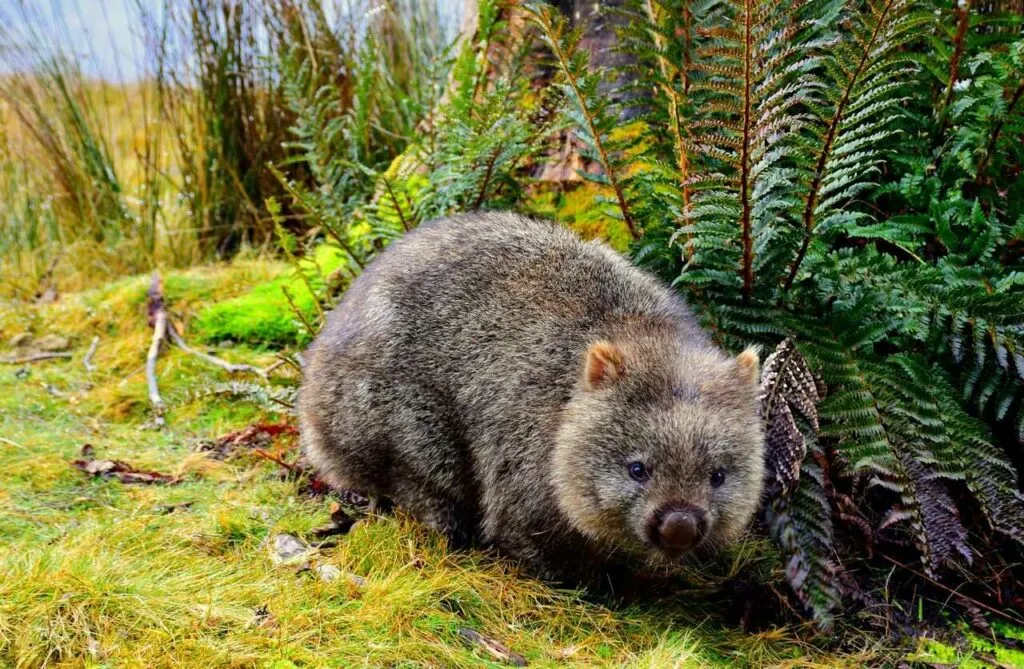
・Southern Hairy-nosed Wombat. ・Northern Hairy-nosed Wombat.
Information
Congratulations! You are the first commenter!

Create Your Favorite List!
Wombat
Save the animals you love! Build your own list to quickly revisit your favorites later.

Would you like to leave a comment?
※Please note: This is for the purchase of rights to post comments within the article.
Find Your Favorites!
Our shop offers a unique and attractive selection of goods themed around various animals.
Wombat References

- ブリタニカ国際大百科事典 小項目事典
- 百科事典マイペディア
- NATIONAL GEOGRAPHIC https://natgeo.nikkeibp.co.jp/nng/article/20141218/428885/
- とあるウォンバット研究者の数奇な人生 https://wombat-suki-life.hatenablog.com/entry/2020/07/25/143142
- ウィキペディア https://ja.wikipedia.org/wiki/ウォンバット
- ディリィ・ニュウス・エイジェンシィ https://dailynewsagency.com/2011/04/17/need-cuddle/
- 雑学カンパニー https://zatsugaku-company.com/wombat-plop-cube-intestinal/#st-toc-h-5
- WIRED https://www.wired.com/2014/12/creature-feature-10-fun-facts-wombats/
- PetPedia https://petpedia.net/article/570/wombat
Wombat Introduction of media used

出典:https://unsplash.com/photos/mnHs4boXT_0

出典:https://unsplash.com/photos/BFErhnRu188

出典:https://pixabay.com/images/id-5162008/

出典:https://pixabay.com/images/id-4847763/

出典:https://pixabay.com/images/id-2385693/

出典:https://unsplash.com/photos/hUidMW9NvmA

出典:https://pixabay.com/images/id-5099450/
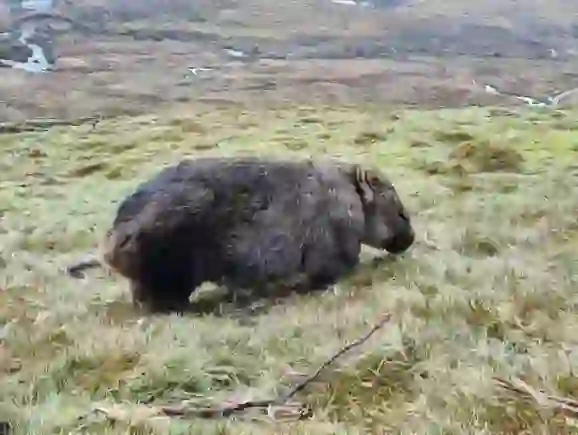
出典:https://unsplash.com/photos/NHn8gfLoyCA
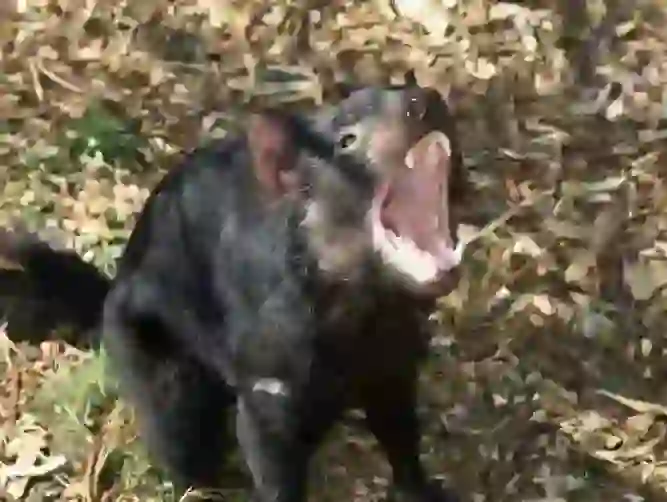
enemy
出典:https://pixabay.com/images/id-2365004/

出典:https://pixabay.com/images/id-2244718/
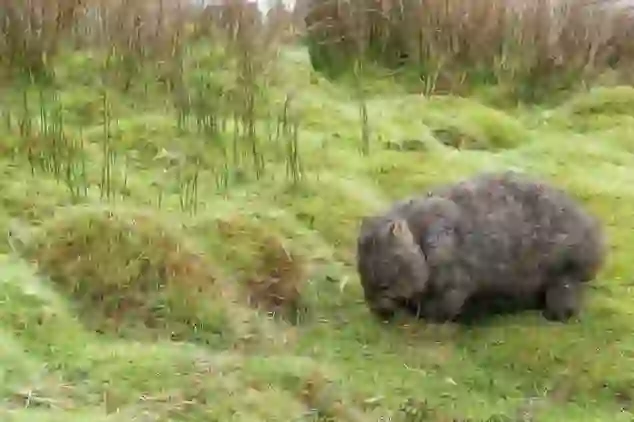
出典:https://pixabay.com/images/id-3887250/
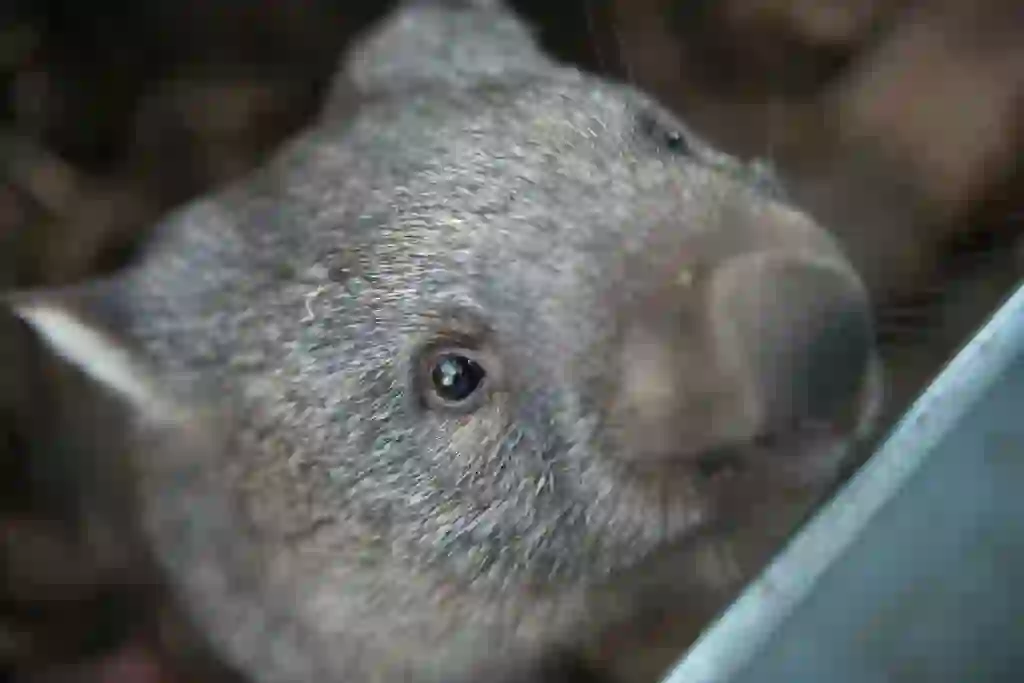
出典:https://pixabay.com/images/id-2365429/

Help Enrich Our Animalbook.jp with Your Media!
We are constantly looking to expand and enrich our Animalbook.jp with amazing photos and videos of animals. If you have any media that you'd like to share, please contribute and help us showcase the beauty and diversity of the animal kingdom. Your submissions will be credited and featured in our encyclopedia, reaching a wide audience of animal lovers.


















